

kansas monks
August 2025
Dear Friends in Christ,
This August, I invite you to reflect with me on the Feast of the Transfiguration, which we celebrate on August 6th. On his holy mountain, Jesus revealed His divine majesty to Peter, James, and John, standing in the company of Moses and Elijah. It was a moment of awe and wonder, but also a reminder that the glory of God is not confined to the extraordinary—it can carry over into the realm of the ordinary, often in ways we do not expect.
As Christians, we know that Christ’s transformative power often reveals itself through the relationships we form. Just as the disciples first knew Jesus as a man from Nazareth, so too do we encounter his grace through human bonds marked by love and faith. For us monks, these moments of revelation frequently come in the form of deep and enduring relationships, blessings that draw us closer to the mystery of Christ.
One such grace-filled encounter came this June during our community’s annual retreat, led by Bishop Hugh Gilbert, O.S.B. On the next page, you will read Part I of a profile written by Dr. James Merrick about Bishop Hugh. His own journey—from Anglican priest to Benedictine abbot to bishop—echoes that of James Merrick, whom many of you know from his work with the Abbey and Benedictine College. Bishop Hugh’s conferences during our retreat were rich with wisdom, helping us see anew the face of Christ in the Rule of St. Benedict and in the Church’s life today.
This edition also highlights another milestone for our community: the groundbreaking for a new daycare facility on Abbey property. In partnership with a local provider, this
faith-based campus will serve families in Atchison, offering care and formation at a critical stage in life. Like Moses and Elijah pointing toward Christ, we pray this collaboration points young hearts to Him from the very beginning.
We also share exciting news from our sister Abbey, St. John’s in Collegeville, whose skilled organ builders will craft a new instrument for our Abbey Church. We are honored that this will be made possible in collaboration with our fellow Benedictine monks. We look forward to the day when our new organ’s sound lifts our prayers and inspires all who worship here to behold the majesty of God.
Christ’s grace continues to transfigure all we do at St. Benedict’s Abbey. May his light also illumine your lives, revealing his glory in both the expected and the surprising moments of grace.


In Christ, Abbot James R. Albers, O.S.B
IN THIS ISSUE
Feature | Announcing Opus Six�
A New Organ for St. Benedict’s Abbey
Up Next | Aberdeen’s Bishop Visits the Abbey � 2
A Scottish Retreat for the Kansas Monks
Aberdeen’s Bishop Visits Atchison’s Abbey
St. Benedict’s Abbey may be becoming the hottest summertime destination for European prelates. At the beginning of June, Hugh Gilbert, OSB visited from Aberdeen, Scotland for almost two weeks to preach the retreat for the monks. Next year, the monks will host Erik Varden, OCSO of Trondheim, Norway.
Gilbert and Varden are both former abbots and current bishops. Both are celebrated retreat masters and authors of weighty meditations on the Christian life. Both come to the Abbey, not with gimmicks or a variation on the latest fad in spirituality, but with humble provocations steeped in the timeless wisdom of the Scripture and Tradition of the Church, illustrated by decades of personal experience.
Bishop Gilbert is the eleventh bishop of Aberdeen (since the 1878 restoration of the Catholic hierarchy in Scotland). Originally from England, his early years were not especially devout. His time at the Anglican
By Dr. James R. A. Merrick
St. Paul’s School of London prompted him to ask for Baptism. On Christmas Eve at the age of eighteen, he entered the Catholic Church.
Immediately after attaining a first-class degree in history at the University of London, he joined the Benedictine monastery of Pluscarden in Elgin, Scotland. He remained at Pluscarden for thirty-seven years and served as abbot for a little over half those years.
Pluscarden Abbey is the oldest medieval monastery still in use in the United Kingdom, established originally as a Valliscaulian community in 1230 by the Scottish king Alexander II. After the dissolution of the monasteries in the sixteenth century, it was not re-established as a monastic institution until it was gifted in 1948 by the Third Marquis of Bute, Lord Colum Crichton-Stuart to the community of Prinknash in England, a once Anglican Benedictine community received into the Catholic Church in
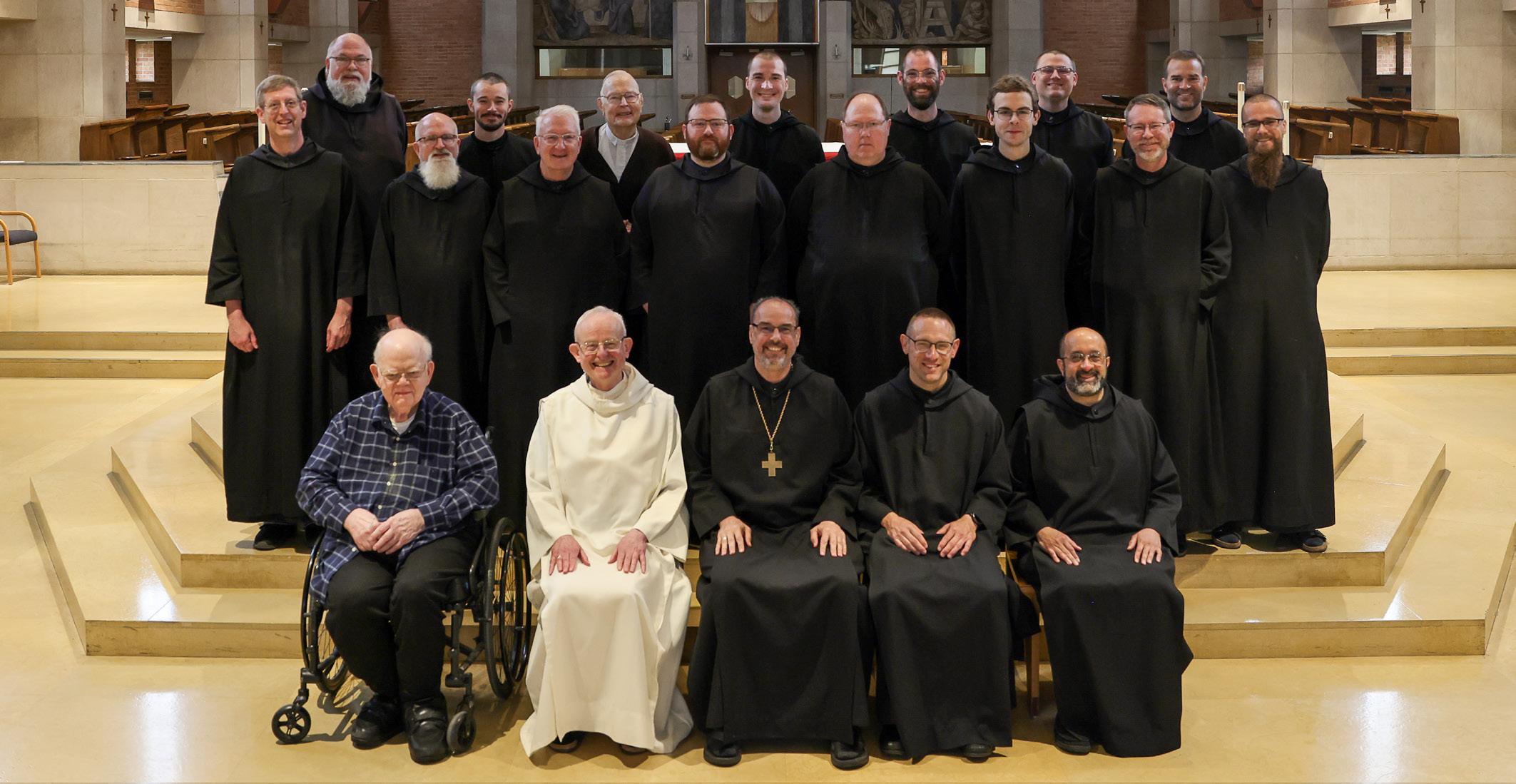
1913. The return of Anglicans to the Catholic Church has thus been a theme of Bishop Gilbert’s personal as well as religious pilgrimage. It should come as no surprise that he is known to have a private devotion to the recently canonized former Anglican, St. John Henry Cardinal Newman.
Described as a “quiet scholarly monk,” Pope Benedict XVI asked Gilbert to serve as the Bishop of Aberdeen in 2011, the diocese in which Pluscarden Abbey is located. His episcopal predecessor described him as the “serene spiritual heart of the diocese.” Upon being nominated, Gilbert pledged to make Christ his top priority and chose “All things hold together in [Christ]” as his episcopal motto.
One of the features of Bishop Gilbert’s episcopal ministry has been the deliberate attempt to promote and increase religious life in his diocese (with a bit of help from the Americans). In 2013, he invited the acclaimed Nashville Dominican sisters to re-found Greyfriars Convent in Elgin Scotland, another gift from Lord Crichton-Stuart. In 2016, he welcomed the Sisters of the Holy Family of the Needy from Africa. Also under his oversight is a public association of the faithful – the Community of St. Andrew – started in Aberdeen by two American sisters in 2013.
Bishop Gilbert is widely hailed as a profound preacher and beloved retreat master. His monastic conferences and homilies have been variously published, including most recently All Time Belongs to Him: Seasons and Feasts of Our Lord (2024).
One of those published conferences caught the attention of the monks: The Tale of Quisquis: Reading the Rule of St. Benedict as Story (2014). Here, Gilbert reads the Rule not as a list of dos and don’ts but as St. Benedict’s attempt to map the dynamics of the Christian life as it takes shape in monastic community. The Rule is best read as a story of the soul on his way back to God by meeting the challenges of discipleship through daily prayer, obedience, and service to the community. It is “the story that grace writes over and over again in our lives.” It is not, he says, “a rigid progression of achievements but a natural unfolding of the Christian life…made of demanding and beautiful things…” (page xv).
Next month: Tune in for more detail on what Bishop Hugh shared with the monks, and how he inspired them with his retreat.
TABLE OF CONTENTS
The monks of St. Benedict’s Abbey are excited for this announcement from St. John’s Abbey Organ Builders on the new organ planned for construction in our abbatial church.
Reflect on the readings for this month’s Sunday and Holy Day Masses. In August, we highlight a number of feasts and memorials that close out the summer.
The mission of St. Benedict’s Abbey is to glorify God by seeking him through joyful self-sacrifice, by embracing fully the monastic and apostolic ideals, and by leading others to encounter Jesus Christ, who brings us all together to eternal life.
The Kansas Monks newsletter is a monthly publication of the monastic community of St. Benedict’s Abbey to help fulfill this mission.
Read our archives at www�kansasmonks �org/newsletter
Half an hour’s meditation each day is essential, except when you are busy. Then a full hour is needed.
saint frances de sales
Announcing Opus Six
An Organ Built by an Abbey for an Abbey
Reprinted with permission from St. John’s Abbey Organ Builders, the following article explains the planned organ for St. Benedict’s Abbey to be constructed by fellow monks of the AmericanCassinese Congregation of Benedictines.
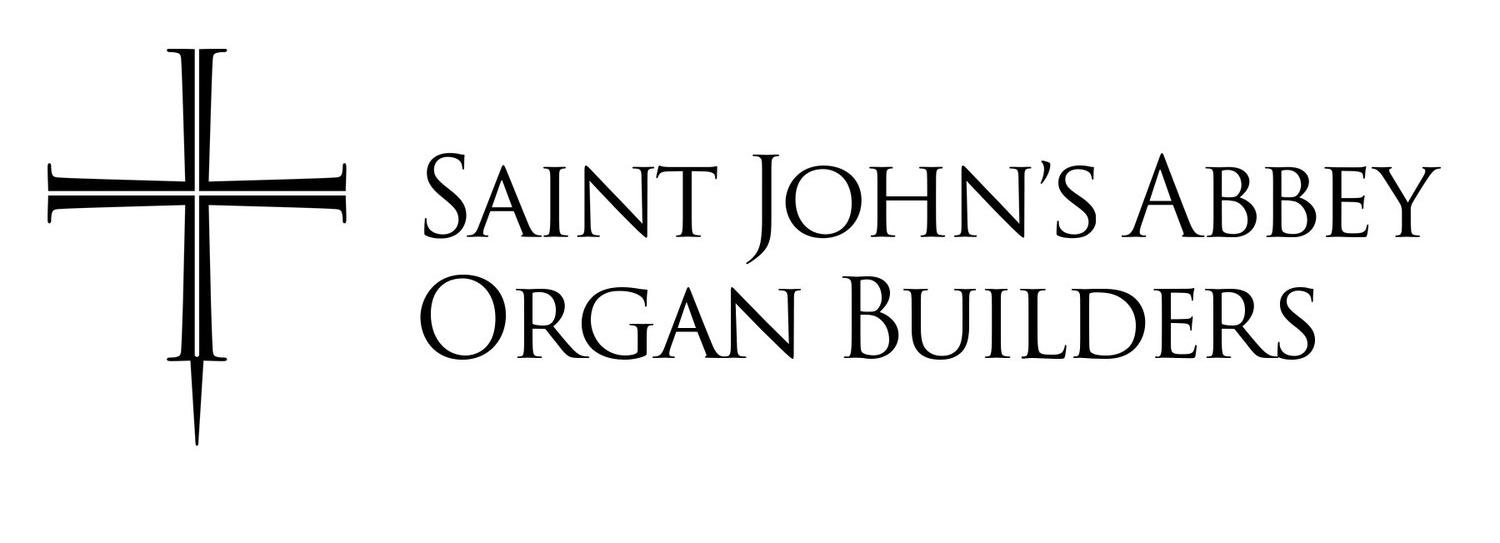
Saint John’s Abbey Organ Builders is pleased to announce the signing of a contract with St. Benedict’s Abbey in Atchison, Kansas, for a pipe organ of 60 stops over four manuals and pedal, to be completed in 2032. St. Benedict’s Abbey is a member of the AmericanCassinese Congregation of the Order of Saint Benedict, and like Saint John’s Abbey, was founded nearly 175 years ago by monks from St. Vincent Archabbey in Latrobe, Pennsylvania.
The commission and creation of a landmark pipe organ offers a special opportunity to celebrate the kinship between our two abbeys and to foster the sacred arts at the heart of our common patrimony. The new organ for St. Benedict’s Abbey Church will be of a scope and quality worthy of the praise of God and the sanctification of the faithful. It will also support the needs of the academic program in Catholic sacred music at Benedictine College.

The design and construction of this new organ will aim toward strong integration with the architecture of the Abbey church and the principles espoused by its architect Barry Byrne: that geometry and outward form should emerge from internal function.
The organ’s physical layout builds upon the scheme of the original Möller instrument and the vision of Fr. Blaine Schultz, OSB, abbey choirmaster from 1968 to 2017. Two expressive choir divisions (Südchor Werk and Nordchor Werk) will be placed at the front of the existing organ chambers flanking the sanctuary (altar area). These divisions will be voiced to accompany the monastic choir and to support the sacred rites at the altar, while also providing the tonal flexibility required to accompany collegiate choral concerts.
We have also proposed that the main divisions of the organ be installed on the West wall of the nave, a traditional and acoustically advantageous position. These divisions (Haupt Werk, Ober Werk, and Haupt Pedal) will form the musical core of the organ when the organ is serving as an independent “cosmic” voice in the liturgy. They will also help lead the assembly in sung prayer and enhance the dialogical and antiphonal dimensions of the sacred rites.
The divisions in the West gallery will use a sensitive mechanical (“tracker”) key action, while the sanctuary divisions will be operated via electric key action, with pipes on traditional slider windchests. All divisions will be playable from a four-manual key desk in the West gallery as well as a low-profile four-manual console in the monastic choir.
Tonally, the organ will follow our house style inherited from Pasi Organ Builders, a style rooted in a Dutch-Flemish “proto-style” from which arose the

major national styles of European organ building. These styles found Catholic expressions over four centuries in France, Spain, Italy, and the Germanspeaking lands of the Hapsburg Empire. In the 18th and 19th centuries, organs of central Europe sought to synthesize elements of these national styles, a fusion exemplified in Benedictine Abbey organs across Alsace, Switzerland, Bavaria, Swabia, and Austria.
The more romantic aspects of the new St. Benedict’s Abbey organ come from the 19th century, evoking the moment when Benedictine monks of Metten Abbey set out from Bavaria for their mission in the New World.
Led by their pioneering spirit, we seek to unite the finest elements of a rich and varied tradition in a new instrument for St. Benedict’s Abbey, a singular voice that will resonate with the architectural language of the Abbey church and express the living faith of the monastic and academic community it serves.
www�kansasmonks �org/organ
The St. John’s Abbey Organ Builders are inspired by Benedictine organ builders of the past like Dom Bédos de Celles, O.S.B. (1709-1779), as well as the influence and legacy Br. Hubert Schneider, O.S.B., master woodworker (pictured above), and local organ builder K.C. Marrin.
Living the Liturgy
Commentary on the Liturgical Year
Reflect on the readings for this month’s Sunday and Holy Day Masses.
August and the Urge for Going
For me, August is the hardest “end of the year,” every year.
By Tom Hoopes
There are many “year ends” each year: The Church year ends when the Advent candles come out, the calendar year ends when the Times Square ball drops, the school year ends with finals, and the fiscal year ends with spreadsheets.
As an adult I learned from love songs that summers often end in regret. In “I Dreamed a Dream” from Les Miserables, Fantine remembers the man who spent “a summer by my side … but he was gone when autumn came.” Taylor Swift and Lana Del Ray both had hits with songs about the cruelty of summer romance — but the best pop song on the topic has to be “Urge for Going,” by Joni Mitchel. She says “I had me a man in summertime / He had summer colored skin” but then, like the migrating birds, “he had the urge for going and I guess he had to go.”
But for me, I can never shake the sinking feeling each year when I see “Back to School” signs in August. That was another sadly irresistible “urge for going” each year — the local school bus would come to take me away from home in August, just like today, my kids pack their cars and drive to college each August.
Shakespeare acknowledged the August “urge for going” when his love sonnet refused to “compare thee to a summer’s day” because “summer’s lease hath all too short a date.” And in Shakespeare’s Tempest, fairies taunt farmers as “You sunburnt sicklemen, of August weary.”
If they were In Kansas, they would taunt “You sunburnt combiners, of August weary.” The harvest is a “year end” where the whole world has the “urge for going.” The wheat reaches its end as birds start heading south and the liturgy reflects what is happening outside, whether it’s in Jesus’s post-harvest parable about grain silos; the Transfiguration’s two eternal travelers, Moses and Elijah, speaking with Jesus “about his Exodus;” or Mary’s migration to heaven on the feast of the Assumption — where she appears in the stars a week later at the Coronation.
They all had the urge for going, so I guess they had to go — to lead where we will follow to the place where all our restless “urge for going” is directed, the place that has no end, the place we never have to leave.
Comfort (and Challenge) Your Neighbors
August 3 | Eighteenth Sunday in Ordinary Time
The words of Jesus’s parable warning about greed seem to apply to many of us in our consumerist society of plenty. Many of us are like the rich man who decides to “eat, drink and be merry” but dies that very night.
In fact, St. Pope John Paul II warned that we are in danger of becoming “slaves of ‘possession’ and of immediate gratification, with no other horizon than the multiplication or continual replacement of the things already owned with others still better.”
But long ago, Qoheleth, in the First Reading, warned us that “all is vanity” and St. Paul, in the Second Reading, tells us to “Put to death the parts of you that are earthly,” especially, “the greed that is idolatry.”
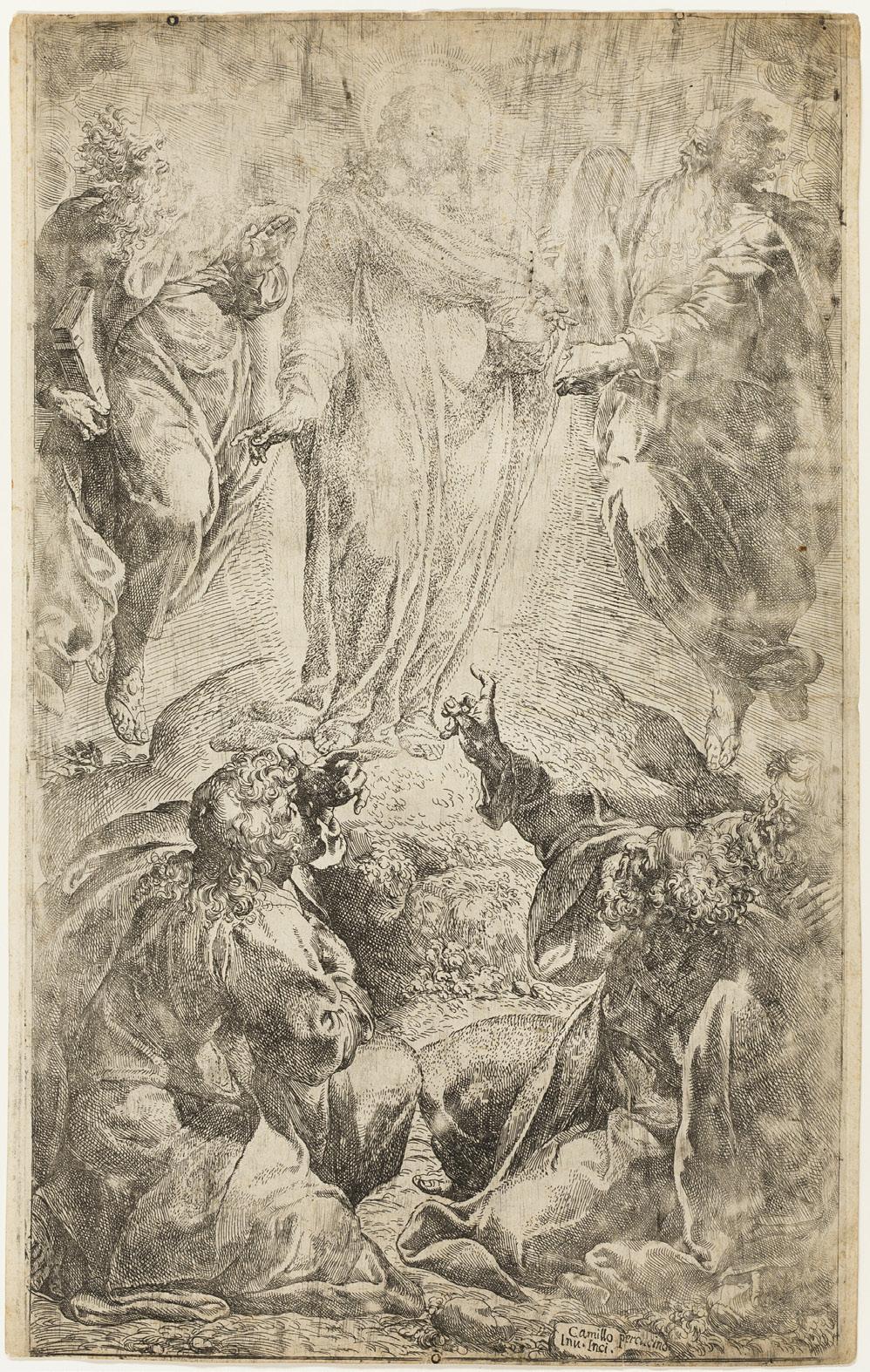
Transfiguration and Transformation
August 6 | Feast of the Transfiguration
This Sunday’s readings are filled with wild mystical images — the Ancient One on a flaming throne with wheels of fire, and Jesus in glory speaking of his “exodus” with Moses and Elijah in glory.
But Peter in the Second Reading warns us not to dismiss it all as “cleverly devised myths.” He really did hear the voice from heaven directing him to listen to Jesus, and says, “You will do well to be attentive to it, as to a lamp shining in a dark place.”
Pope Leo XIV echoed him in June, saying, “God is everything, your everything. If you are hungry, God is your bread; if you are thirsty, God is your water; if you are in darkness, God is your light.”
The Secret to Happiness
August 10 | Nineteeth Sunday in Ordinary Time
When Jesus says, “Gird your loins and light your lamps, and be like servants who await their master’s return,” and “Blessed are the servants whom the master finds vigilant on his arrival,” I’m reminded of life-changing advice a monk of St. Benedict’s Abbey gave my son.
The secret to happiness is to live your state in life well, doing what you are supposed to do, every day — schoolwork, housework, or your job — and to do it diligently, with loving kindness.
The secret to happiness is to live your state in life well, doing what you are supposed to do, every day — schoolwork, housework, or your job — and to do it diligently, with loving kindness.
Doing this brings peace of mind and spiritual growth, as the other two readings attest. Abaham’s obedience to God’s commandment made his descendants as numerous as the stars, and the Passover obedience of the Jewish people freed them.
Mary in Heaven
August 15 | Solemnity of the Assumption of the Blessed Virgin Mary
The Church teaches that Mary “was taken up body and soul into the glory of heaven,” but we forget how radically strange it is to put a human body outside of space and time next to Almighty God.
The poet Rainer Maria Rilke reminds us by writing: “When she entered the heavens, she did not go towards him, despite her strong longing; there was no room; only he was there and shone with a radiance that hurt her.” Then, “She suddenly fell forward — but the angels took her in their fold and steadied her and sang with blessed voices and carried her up the final steps.”
Pray for us, holy mother of God, that we too, somehow, may be made worthy of the promises of Christ!
Camillo Procaccini, The Transfiguration (1590).
Keep Your Eyes on Jesus August 17 | Twentieth Sunday in Ordinary Time
“Since we are surrounded by so great a cloud of witnesses,” says the Letter to the Hebrews today, “let us rid ourselves of every burden and sin that clings to us and persevere in running the race that lies before us, while keeping our eyes fixed on Jesus.”
The image makes the earth a stadium and heaven our spectators. Our goal is Jesus, who sounds like a coach in the day’s Gospel, saying, “I have come to set fire on the earth,” and promising to divide us even from our families to keep our focus where it should be.
But rather than feeling like breaking the tape in front of a cheering crowd, the Christian life often feels more like being lowered into a cistern by enemies, alone, like Jeremiah in the First Reading. Even then, though, our witnesses in heaven will be cheering us on.
The great saints of July trusted that God was loving and attentive, even when circumstances seemed to disprove it. And they were proven right.
Know Him Today, While You Can August 24 | Twenty-First Sunday in Ordinary Time
Someone asks, “Lord, will only a few people be saved?” and Jesus answers: “Many, I tell you, will attempt to enter, but will not be strong enough.”
He describes a scene where religious people bang on heaven’s door calling “Lord!” and saying “We ate and drank in your company, and you taught in our streets!” — in other words, “We went to Mass and Bible study!”
He won’t open the door, but instead says: “Depart from me, all you evildoers!” That’s frightening. If they don’t measure up who will? The answer is in what he says to them: He doesn’t know who they are.
He only knows those who speak to him in daily prayer, have an authentic encounter with him in the sacraments, and serve him in the least of his brothers.
Patrons for the Disappointed August 27, 28, and 29 celebrate the memorials of St. Monica, St. Augustine and the Passion of St. John the Baptist
As summer ends, many of us may feel that we have passed the summer of life, too. In the springtime of youth, we dreamed big dreams. With autumn closing in, the dreams have died.
The Church places before us St. Monica, who spent her lifetime in tearful prayers for her son, but had to wait until just before her death for the answer. Then there is her son, St. Augustine, who spent precious years following a false faith, enslaved to sin, before he could finally tell God, “Late have I loved you.”
Last, we meet St. John the Baptist, who made grand promises about the coming Messiah, but was beheaded in a dungeon early in Jesus’s ministry. Even if we are in his position, with our high hopes unrealized in an uninspiring last act of life, our lives still have eternal meaning in Christ.
Beyond the Lowest Place
August 31 | Twenty-Second Sunday in Ordinary Time
We all remember Jesus’s admonition in today’s Gospel to seek the lowest place at table, but we tend to forget the advice he offers for inviting guests to our table: “Do not invite your friends or your brothers or your relatives or your wealthy neighbors. … Invite the poor, the crippled, the lame, the blind.”
But the reasons he gives for taking the lowest place and inviting the “lowest” guests is the same. “Everyone who exalts himself will be humbled, but the one who humbles himself will be exalted” he says — in fact, “you will be repaid at the resurrection of the righteous.”
The other two readings deliver the same advice. Sirach says, “humble yourself the more … and you will find favor with God.” And the Letter to the Hebrews sees us joining “countless angels in festal gathering.” That gathering starts at Mass where Jesus takes the lowest place of all — the food.
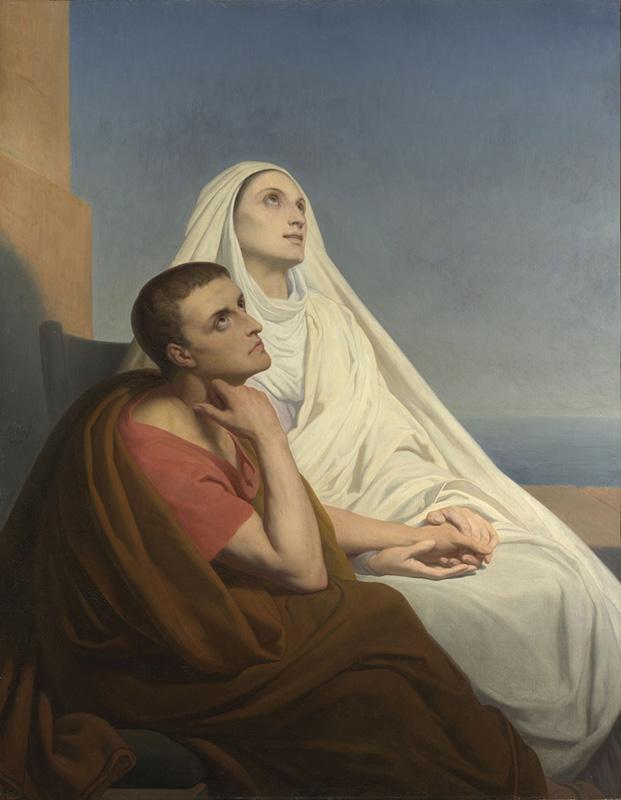
Art Scheffer, Saints Augustine and Monica (1854). Oil on canvas.
The First Step
The Groundbreaking of First Steps with Abbey
On June 18, we broke ground on First Steps with Abbey. We were blessed to be joined by Sara Bloom (Quality Places Manager, KS Department of Commerce), LaRochelle Young (Mayor, City of Atchison), Katherine Harris (Director, First Steps Childhood Learning Center), Melissa Rooker (Executive Director, KS Children’s Cabinet and Trust Fund), Senator Dinah Sikes (KS Senate Minority Leader & Children’s Cabinet Trustee), Nina Ostertag (Director, First Steps Childcare Center), Dr. John Eplee (Former State Representative), State Senator Jeff Klemp, Pat George (Former KS Secretary of Commerce), and Bill Murphy (City Commissioner).
In 2021, St. Benedict’s Abbey purchased over 160 acres of land in Atchison, Kansas at a property tax sale, including the abandoned Kansas Juvenile Detention Facility. The Abbey has a goal to transform the site into a family and children services complex; offering integrated childcare, medical, pregnancy resource and social servicesto Atchison County families. Funded in part by a $5 million Capital Project Fund grant, the project will renovate three buildings and the surrounding area to meet urgent local demand—especially for childcare services in Atchison County. First Steps Childhood Learning Center is partnering with the Abbey in launching First Steps with Abbey, a nonprofit Christian childhood learning center. This collaborative effort reflects the power of faithbased community partnerships to drive meaningful and lasting change.
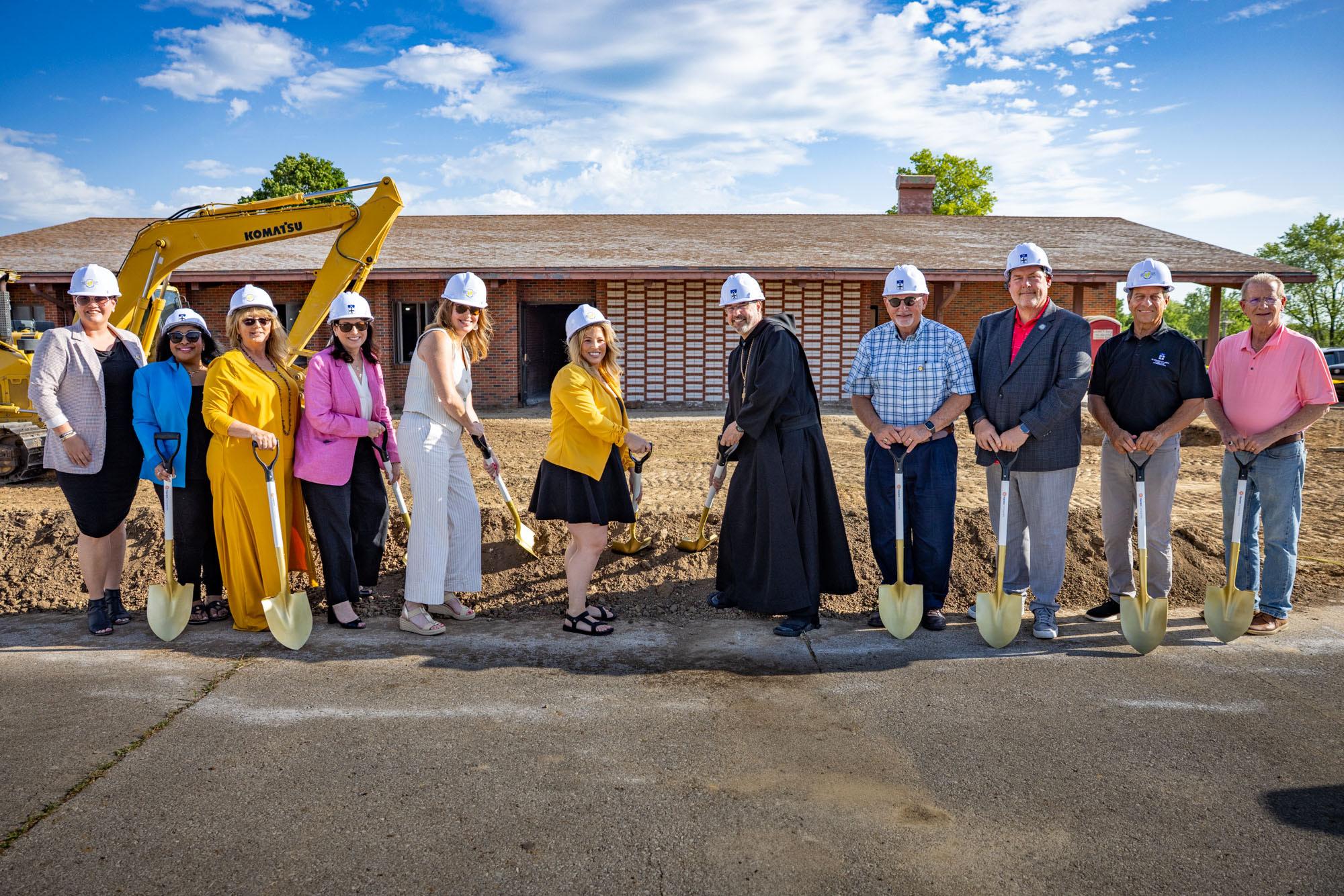
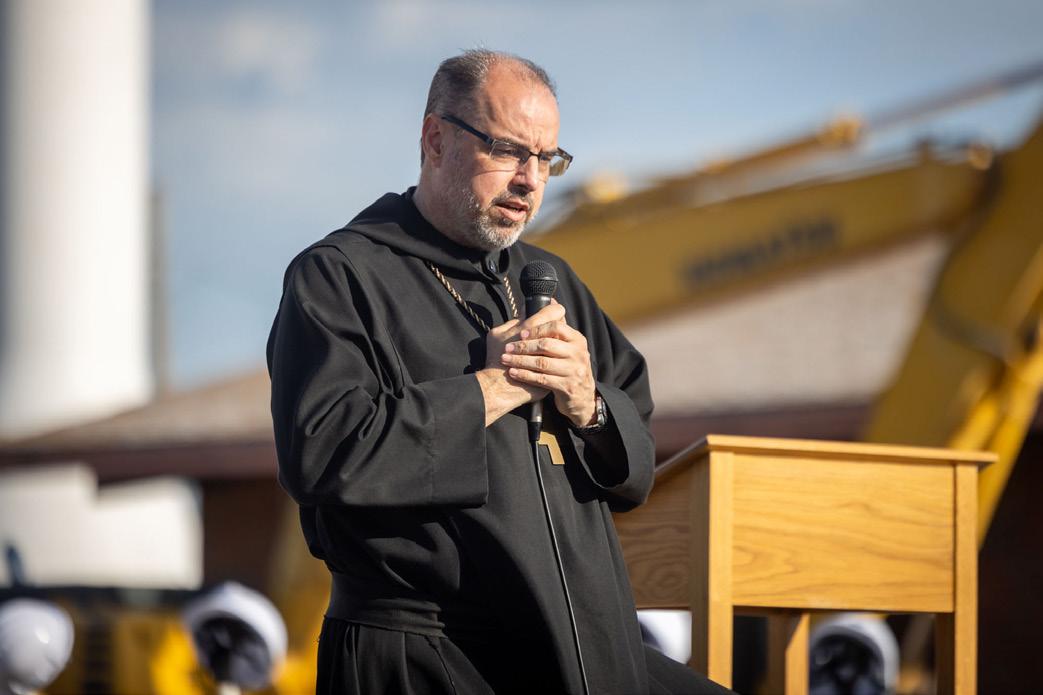
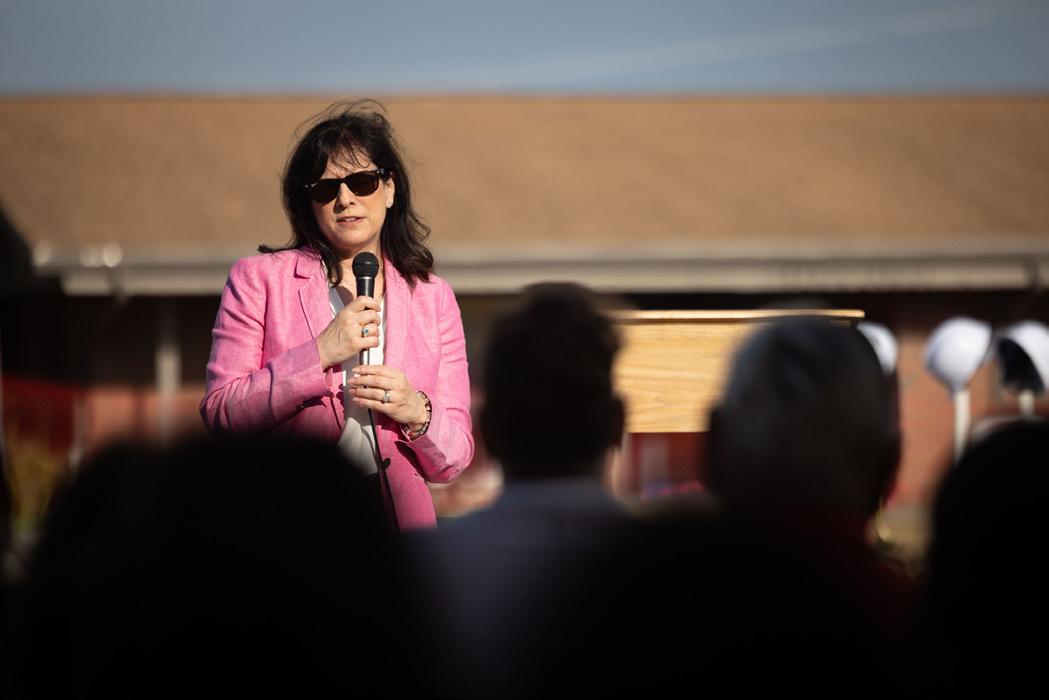

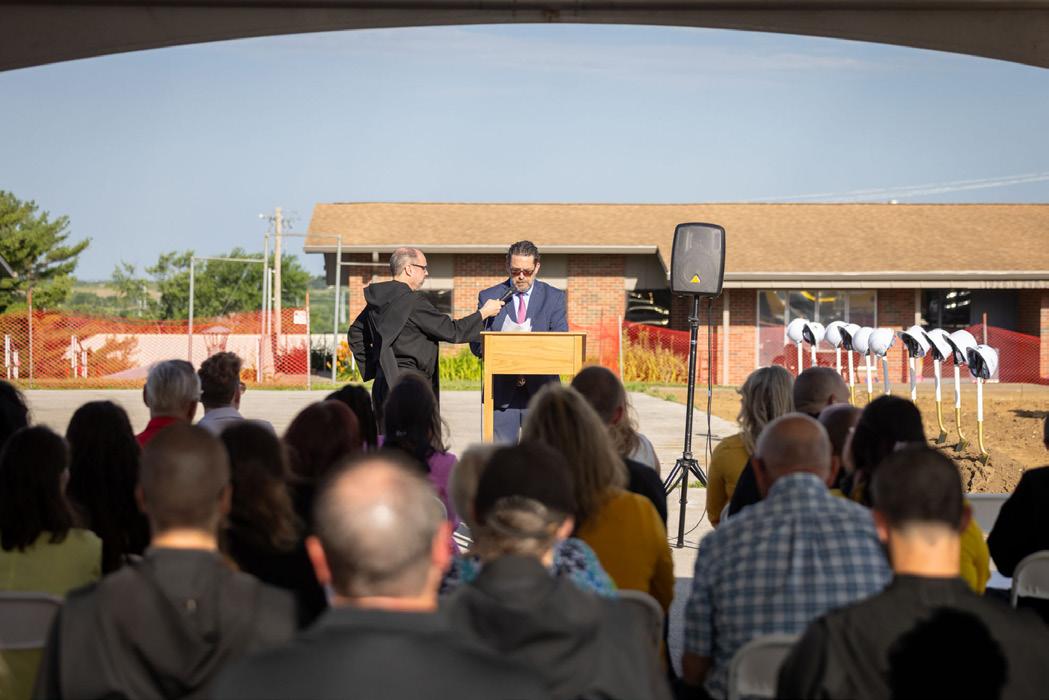
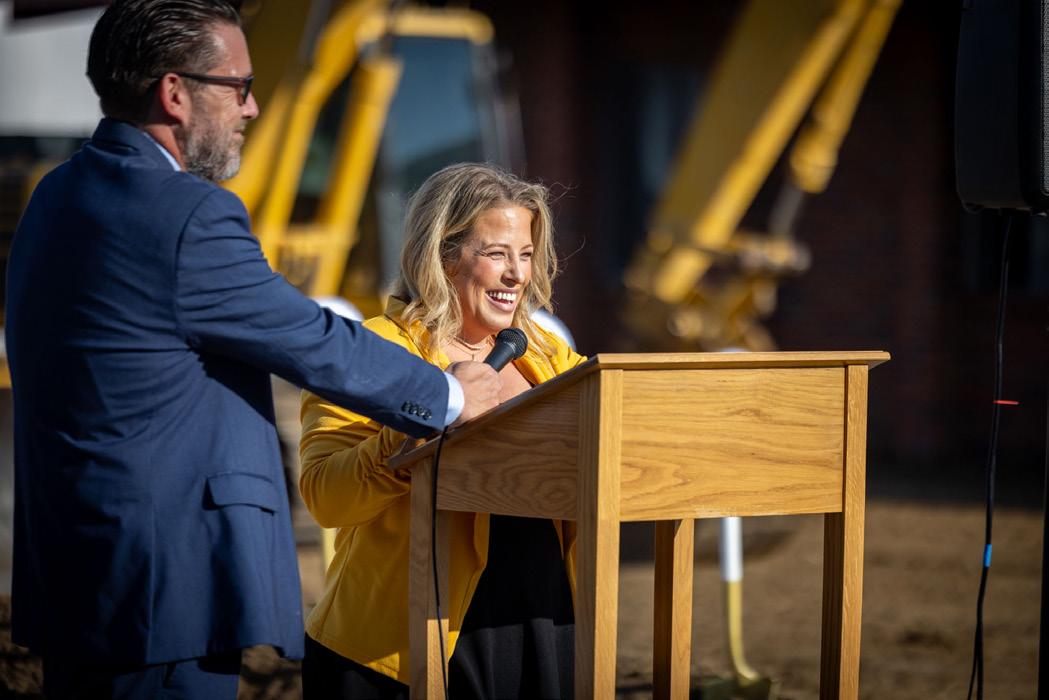


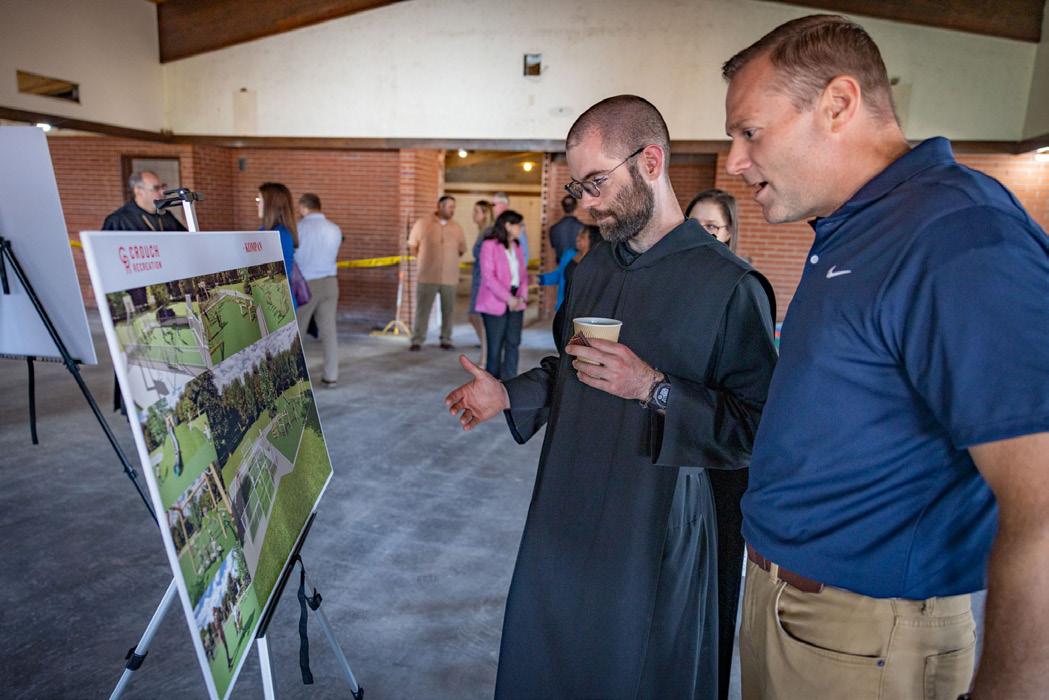
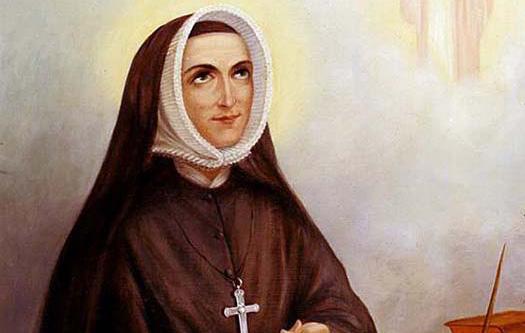
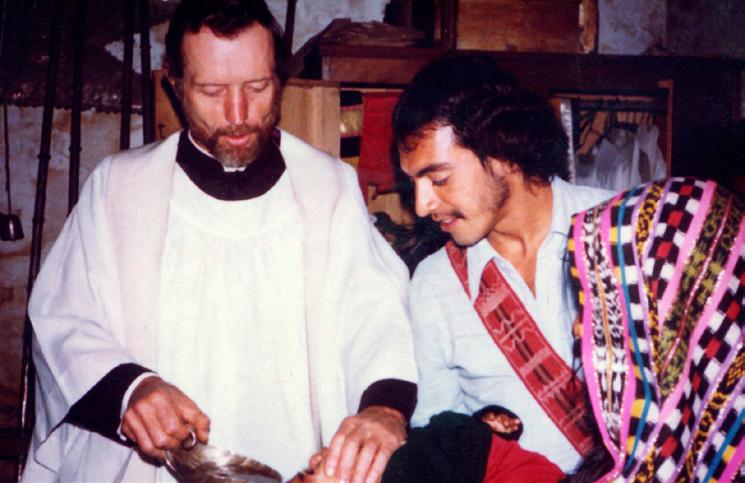

Pilgrimage of Hope
Thursday - Sunday, October 16 - 19, 2025
Join Abbot James and the monks of St. Benedict’s Abbey on a four-day spiritual pilgrimage in the heartland to visit the Sacred Jubilee sites and the holy sites that bear witness to the courageous faith and holiness of three remarkable figures: Saint Rose Philippine Duchesne, Blessed Stanley Rother, and Venerable Emil Kapaun. Pre-register today at www.kansasmonks.org/pilgrimage-of-hope
KANSAS MONKS
editorial team
Editor-in-Chief - Abbot James Albers, O.S.B.
Managing Editor - Seth Galemore
Art Director - Olivia Wieger
Publication Advisors:
Fr. Matthew Habiger, O.S.B.
Josh Harden
Dwight Stephenson
follow @kansasmonks on
donate to support st. benedict’s abbey www.kansasmonks.org/donate
submit your prayer requests www.kansasmonks.org/prayer-requests
Take a look inside the workshop of the Saint John’s Abbey Organ Builders. www.kansasmonks.org/organ
